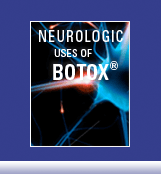![]()
 |
What exactly is a Cluster Headache?
A cluster headache (according to International Headache Society criteria {Cephalgia 2004;24 (Suppl 1)}) has to satisfy the following criteria:
1) Severe unilateral headache in the orbital, supraorbital, or temporal region lasting 15 minutes to 3 hours.
2) The frequency of headache must vary between one every other day, up to 8 per day.
3) The headache must be associated with either:
- Lacrimation (eye tearing)
- Nasal congestion
- Rhinorrhea (runny nose)
- Forehead/facial swelling
- Miosis (small pupil)
- Ptosis (eyelid partially closed)
- Eyelid edema
- Conjunctival injection (redness in the white part of the eye)
- Sense of restlessness or agitation during the headache
4) No other associated disease
Cluster headaches are considered episodic if they come for 7 days to one year apart with at least a 2-week, pain free break. They are considered chronic if they last longer than one year without a 2-week pain-free break.
So what is paroxysmal hemicrania?
Chronic paroxysmal hemicrania is, for all practical purposes, a “cluster-like” headache that responds completely to the drug indocin.Clues that it is paroxysmal hemicrania instead of cluster headaches are:
- The headaches are shorter and tend to occur more frequently.
- Not all of the headaches are severe.
It is important to keep an accurate history of the headaches in order to help Dr. Loftus or your neurologist correctly diagnose the headaches.




